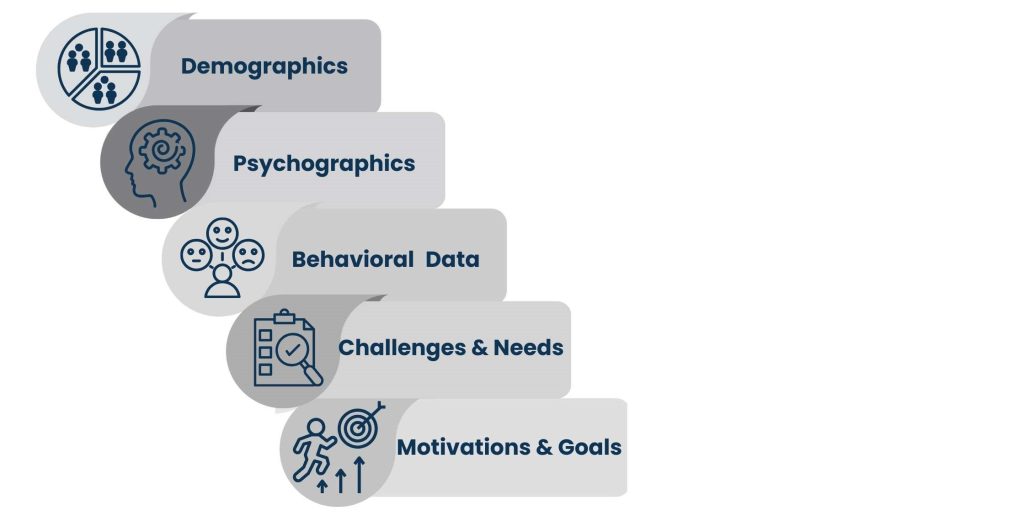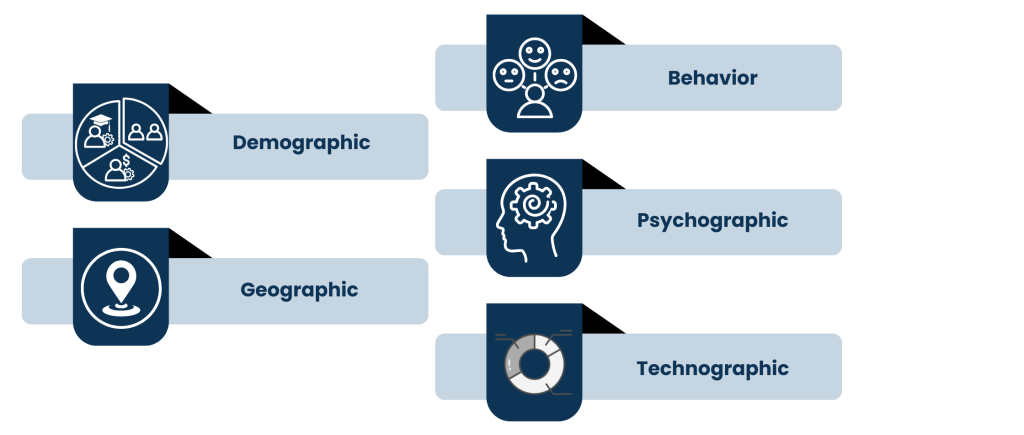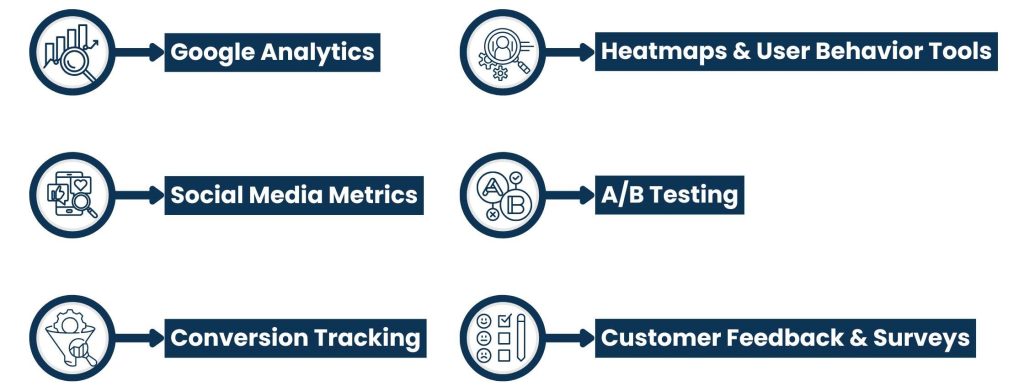Introduction
Audience Development Strategies help to successfully expand the business, with the knowledge of the type of crowd that hears you. Whether you’re starting a new venture on the ground floor or overseeing a legacy brand. Knowing who your audience is and continuously targeting them ensures cost-effective and impactful marketing efforts. Lack of identifying and targeting the right audience will drain resources on campaigns or initiatives without positive and desirable results.
This is where audience development strategy comes into the picture. These strategies help businesses identify target customers, and their behavior and create tailored marketing to fit them. AI-powered tools have made it easy to recognize and target the right audience accurately. More than ever, companies can know and approach specific consumers.
Audience Development
When targeting the right audience, companies can boost engagement, foster brand loyalty, and achieve higher conversions. But the trick is knowing your target customers and what motivates them to make a purchase. No creative marketing campaign can achieve results without following the proper audience research.
Furthermore, today’s consumers are more connected and informed than ever before. As there are many ways to communicate with business customers—such as social media, search engines, and email—you need a multichannel audience strategy to enable you to engage with your ideal customers. It generates the eyeballs of prospective buyers and long-term engagements resulting in brand advocates.
Then, you have to take into account behavioral trends and technology. Customer expectations are also evolving, due to the changing digital arena. Striking the right balance amidst the wealth of information available can create opportunities that their competition will find hard to reach.
In this ultimate guide to audience development, we will cover the best ways to develop an audience Including demographic analysis, psychographic segmentation, competitor research, and digital marketing tactics. Using these steps you will surely goodbye all the last steps and should target the right customers. Whether you are a small business looking to grow or a huge corporation trying to focus your audience, this marketing guide is designed to help you achieve results.
Exploring Audience Development Strategies
What are Audience Development Strategies?
The strategy of creating audiences for your business is called audience development strategy. It involves the systematic process of reaching, engaging, and converting people into loyal customers. These techniques include collecting data on consumer preferences, behaviors, and purchasing habits to develop targeted marketing campaigns.

Good audience development strategies ensure:
- Companies spend resources effectively to target the right people.
- Higher engagement and conversions for marketing campaigns.
- Brands create long-term relationships with their consumers.
- Businesses monitor customer actions and craft marketing activities accordingly.
- Brands can segment audiences to send out more personalized messaging.
Businesses that use audience development approach marketing with great flexibility ensure to reach the correct audience with the correct message at the correct time.
Also Read: Virtual Assistant Services in Żabbar
Why It’s Important to Identify the Right Audience
Marketing without knowing the right audience can lead to wasted resources and low ROI.

There are many reasons for why you need to know your audience:
- Higher Conversion Rates: Marketing to the right audience increases the chances for a sale and engagement since advertisements and promotions reach potential customers best when they are already likely to act.
- Budget-Friendliness: Targeted marketing minimizes the ad budget increases return on investment (ROI) and saves businesses with demographics where paying consumers exist.
- Enhanced Brand Loyalty: Personalisation strengthens customer relationships with the brand by building meaningful interactions that resonate with consumer needs and values.
- Competitive Advantage: The better you know your audience, the more you can stand out from your competition with customized solutions designed to counter pain points.
- Enhanced Customer Retention: Audience development allows businesses to employ targeted engagement and relationship-building tactics, leading to improved customer retention.
- More Successful Product Development: Understanding your target market enables companies to create products and services that meet market needs, enhancing the likelihood of success.
- Improved Content Marketing Strategy: Only targeting the right audience will these posts and other content types resonate with potential customers, increasing the engagement rate of the target audience.
Audience development is a strategy by which businesses develop their audience through creative marketing campaigns that cater to their target market. Such tactics allow businesses to hone in on the most effective way to market themselves, thus ensuring campaign alignment with consumer needs and business goals across the board. The second step in data-driven marketing is targeting, the more accurate the targeting is the better the marketing will be effective and lead towards sustainable business growth and a competitive edge over the corporate.
How to Find Your Target Audience in 6 Steps
1. Define Your Business Goals
To identify your audience, you need to have clear business objectives.

Ask yourself:
- What services or products do you sell?
- What issues do you address with your products?
- Who derives the most benefits from your products?
- What is your immediate and future business strategy?
When you have a goal set in your head, it narrows down the audience for your business. Clearly defining your business goals also allows you to craft messaging that will resonate with the appropriate audience. If you want to offer budget marketing software for businesses, then you might target business founders, small business owners, or marketers looking for affordable tools.
Moreover, it acts as an umbrella under which all marketing activities should be directed with definable success criteria. A clear vision allows businesses to better measure progress and pivot based on performance data.
2. Conduct Market Research
Data collection and analysis for target customers is called market research.

Here are ways you can gain these insights:
- Surveys and Questionnaires: Collect customer insights on likes, desires, and needs.
- Competition Analysis: Analyze your competitors’ audience and marketing strategies to spot gaps and opportunities in the market.
- Market Studies & Industry Reports: Other types of broader trends for consumer behaviors can be found in market studies and industry reports.
- Focus Groups: Run group discussions with potential customers for a deeper understanding of their purchasing decisions, motivations, and pain points.
- Customer Interviews: Conduct direct interviews with existing and potential customers to gain a deeper understanding of their needs and preferences.
In short, a complete market research process enables a business to know what inspires consumers to act so they can adapt their marketing strategies. This data also enables businesses to create unique selling propositions (USPs) that differentiate their brand.
3. Create Buyer Personas
A buyer persona is a fictional representation of your target customer rooted in real data. Buyer personas allow businesses to better tailor their marketing copy and products & services.

Take the following factors into consideration when building buyer personas:
- Demographics: Age, gender, location, income bracket, education.
- Psychographics: Interests, values, lifestyle, pain points, preferred content mediums.
- Behavioral Data: Purchasing behaviors, online engagement, product interests, and preferred communication methods.
- Challenges & Needs: What obstacles are in their way? How does your business offer a solution?
- Motivations & Goals: What are their purchasing decisions based on?
For instance, if you sell fitness equipment, your personas might include:
- 25-40-year-old professionals who work out at home, are aware of their health, and are interested in compact, simple fitness equipment.
- Independent gym owners wanting professional equipment upgrades to get more customers.
- Personal trainers looking for quality fitness tools to support client sessions and build their business.
Buyer persona definition personalizes the marketing campaigns, according to their needs and interests, which can boost engagement and conversion.
4. Assess Your Existing Customers
This can also be done if you are already an established business by analyzing your existing customers to find out what commonalities exist among your loyal and high-value customers.

Get insight from the following tools:
- Google Analytics: Gain insight into your website visitor demographics, behavior, traffic sources, and engagement metrics.
- Social Media Metrics: Platforms such as Facebook, Instagram, and LinkedIn offer insights into audience demographics and engagement trends.
- CRM Software: Customer Relationship Management (CRM) tools help track purchasing behaviors, customer interactions, and trends over time.
- Evaluate Previous sales records: Identify consumer buying habits and trends with previous sales.
- Customer Stories: Analyze reviews, testimonials, and direct feedback to learn about customer experiences and expectations.
You can develop a better audience development strategy by studying your existing shoppers so that you can reach an even greater proportion of people who fit your customer persona. So Learn What Makes Your Existing Customers Loyal to your Brand.
5. Segment Your Audience
Segmenting the audience breaks a relatively large customer base down into smaller, more niche groups based on common similarities. Businesses can then create more of their marketing messages based on the target audience.

There are different types of segmentation to consider.
- Demographic: Age, gender, income, education level, marital status, job title.
- Geographic: This involves segmenting the customers based on their locations, which can be by country, city, region, or climate.
- Behavior: Buying Behavior, Brand Relationship, Usage Rates & Customer Loyalty.
- Psychographic: Interests, lifestyle, values, attitudes, and personality traits.
- Technographic: Segmenting is based on the technology and digital tools used by customers, such as favorite social media platforms, devices, or software.
Audience segmentation enables companies to tailor marketing communications to specific groups of customers.
Example:
A clothing retailer can segment based on the following segments for their messaging:
- Fashion-forward younger professionals seeking stylish outfits for work.
- Parents looking for comfy, hard-wearing pieces for their kids.
- Any fitness enthusiasts in search of workout wear specifically made for performance.
Segmenting your audience will improve your marketing by sending more relevant content thus increasing engagement and conversion rates. By sending personalized messages to specific groups of audiences, businesses can maximize the impact of their marketing efforts while minimizing wasted resources.
Also Read: Virtual Assistant Services in Żejtun
Targeting Ideal Audience
1. Use Online advertising Platforms
Run targeted search and display campaigns using keywords, customer intent, and geographic targeting with Google Ads.

- Facebook & Instagram Ads: Target customer segments based on habits, interests & demographics and create personalized ads.
- LinkedIn Ads: Perfect for B2B audience targeting. This is a platform where companies discover and interact with professionals in their industry, decision-makers, and company executives.
- YouTube Ads: Make use of video content to engage and convert viewers with targeted messaging and remarketing strategies.
- TikTok & Pinterest Ads: Reaching Visual Consumers on TikTok & PinterestTikTok and Pinterest are platforms that allow companies to communicate with visually-driven individuals, such as youth looking for inspiration or creativity.
Paid advertising allows companies to target specific groups of people with messages that are relevant to them. Retargeting allows businesses to engage with prospects who are already aware of the business but haven’t yet converted.
2. Make the Most of Your Content Marketing Execution
Content marketing organically attracts the right audience and establishes brand authority.

Some great content marketing strategies are:
- SEO Optimization: Optimize for specific keywords to boost search engine placement and grow organic traffic.
- Blogging: Valuable content on pain points, education, perceptions, and industry news.
- Video Marketing: Leverage engaging video content like tutorials, testimonials, and explainer videos to connect with audiences visually.
- Email Marketing: Use segmentation to trigger personalized emails to nurture leads and increase customer retention.
- Podcasting: Share brand expertise in audio format to drive authority while also reaching a new audience on streaming platforms.
- Case Studies & Whitepapers: Provide comprehensive insights into your industry, showcasing your expertise while offering solutions for common issues.
When businesses align marketing tactics with audience development initiatives, they boost brand credibility and engagement.
3. Use Social Media Engagement
This means that social media platforms provide tremendous data regarding how people are interacting with your brand.

Apply these Audience development strategies to enhance your social media presence:
- Connect to Industry-Focused Groups: Participate in groups that revolve around your industry, providing answers and solutions wherever you can.
- Have Social Listening Tools: Track hashtags, monitor brand mentions, or analyze customer sentiment to modify your strategy as you develop.
- Engaging Content: Use polls, quizzes, live Q&As, and giveaways to invite your audience to engage, which will lead to higher engagement rates.
- Team Up with Influencers: Partner with industry influencers to expand reach, build credibility, and tap into established communities.
- Leverage User-Generated Content (UGC): Ask for customer feedback about your products and services.
- Live Streaming: Conduct live webinars, product launches, or Q&A sessions to interact with followers directly and create real-time engagement opportunities.
A well-crafted social media strategy increases brand awareness, encourages customers to become fans of a brand, and provides info about customer behavior.
Track and Measure Performance
Lastly, the success of the different types of audience development strategies is measured to ensure continuous success.

These tools can help you track the performance of audience development strategies:
- Google Analytics: Track website traffic, audience demographics, and user behavior to optimize marketing efforts.
- Social Media Metrics: Monitor engagement rates, shares, follower growth, and platform-specific conversion metrics.
- Conversion Tracking: Monitor return on investment for paid advertising campaigns, as well as the most converting campaigns.
- Heatmaps & User Behavior Tools: Tools such as Hotjar and Crazy Egg analyze how users interact with your website, finding areas for improvement.
- A/B Testing: Regularly test various ad creatives, landing pages, and content types to find what resonates best.
- Customer Feedback & Surveys: Obtain direct insights from your audience to adjust marketing strategies and improve user experience.
By regularly reviewing performance figures, businesses can refine targeting strategies, allocate budgets effectively, and optimize marketing efforts for better results. Generating insights from data, adapting to changing consumer behavior, and building applications that deliver highly personalized experiences for consumers work together as a unit to help businesses overcome challenges and ultimately foster better engagement with the audience over time.
Conclusion
The most critical foundation tip for running your marketing is to identify the right audience by targeting the right people. By implementing audience development strategies, businesses develop a strong background. All of these strategies play a role in allowing brands to make the most of their marketing dollars, from in-depth market research and audience segmentation to digital advertising and content marketing.
However, framing the perfect audience is not a set of one-time process. Most businesses have to keep looking for new ways by tracking trends, studying the behavior of consumers, and finding better ways to do business. Marketing strategies need dynamic adjustments through regular data analysis and performance tracking to remain effective and in tune with changing consumer preferences.
Additionally, as personalization becomes increasingly important, companies need to look beyond simple demographic segmentation and take into account psychographics, behaviors, and customer journey stages. Knowing what drives and impacts purchase decisions enables businesses to craft highly relevant messaging that makes sense to the audience.
Key Takeaways:
Another important thing is engagement. Identifying the right audience is not enough; brands need to engage and nourish relations with their consumers. Taking advantage of social media, content marketing, email campaigns, and community engagement will play a significant role in solidifying the bond between the brand and consumers and, consequently, brand loyalty.
With the advancement of digital tools, businesses have to adapt by leaning into groundbreaking marketing technologies, utilizing data-driven insights, and implementing AI-based targeting methods. Companies that focus on optimizing their audience development efforts will be in a better position for sustainable growth, customer retention, and ROI.
If marketing is what you need to work on, begin with your customer data, refine your content strategy, and finally, offer some money for the paid alternative. To compete in today’s business landscape, you must have the right audience development strategies that create the perfect foundation to drive greater engagement, higher ROI, and longevity of your business.
All of these strategies play a role in allowing brands to make the most of their marketing dollars, from in-depth market research and audience segmentation to digital advertising and content marketing.
If you’d like to improve your marketing strategy, start by measuring the effectiveness of your customer data, refining your content strategy, and using paid advertising. Through proper audience development, your business can achieve greater engagement, higher ROI, and long-term success.
About Us
Tasks Expert offers top-tier virtual assistant services from highly skilled professionals based in India. Our VAs handle a wide range of tasks, from part time personal assistant to specialized services like remote it support services, professional bookkeeping service etc. Furthermore, it helps businesses worldwide streamline operations and boost productivity.
Ready to elevate your business? Book a Call and let Tasks Expert take care of the rest.










